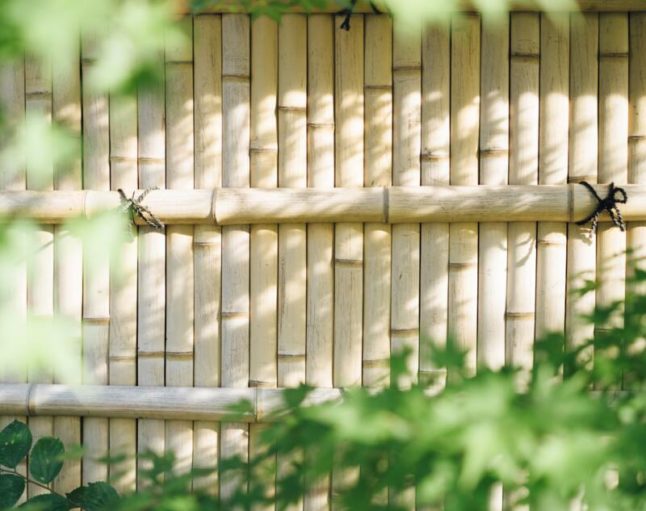All Categories
Featured
Selecting the appropriate fence for your property entails mindful consideration of performance, visual appeals, budget, and long-term upkeep. Whether you're looking to boost personal privacy, enhance curb appeal, or secure your building, understanding your choices will help you make an informed choice. Below's a thorough guide to choosing the suitable fence for your needs.
![]()
Personal Privacy: Tall, strong fences like wood or vinyl are optimal for obstructing presence. Safety and security: Sturdy products like light weight aluminum or steel give a secure barrier. Visual Allure: Ornamental fences, such as functioned iron or picket designs, improve aesthetic allure. Control: For pets or kids, fences like chain-link or plastic are practical selections. Sound Decrease: Dense materials, such as composite fencing, can assist moisten sound. Plainly identifying your objectives will certainly limit your options substantially.
Timber: Uses an all-natural, timeless appearance and is very adjustable but needs routine upkeep. Plastic: Reduced maintenance and sturdy yet might have a higher first cost. Light weight aluminum: Lightweight, rust-resistant, and elegant, though not optimal for privacy. Chain-Link: Cost effective and useful but does not have visual allure and privacy. Wrought Iron: Resilient and attractive however can be expensive and requires maintenance. Compound: A blend of wood and plastic, supplying resilience with a wood-like look. Pick a product that lines up with your concerns and complements your building's design.
![]()
Reduced Maintenance: Plastic, light weight aluminum, and composite fencings require occasional cleansing. Modest Maintenance: Wrought iron fencings may require repainting to stop rust. High Maintenance: Timber fences require routine discoloration, sealing, or paint. Take into consideration just how much effort and time you want to purchase maintenance throughout the years.
A picket fence fits a traditional home. A modern property may look ideal with sleek, minimalist secure fencing products like vinyl or steel. A country property might benefit from rustic wood or split-rail fence. 7. Seek Professional Recommendations. Consulting a secure fencing professional can help guarantee you select the appropriate material, design, and installment process for your residential or commercial property. Experts can examine variables like dirt incline, type, and environment to advise one of the most appropriate options.
Verdict. Choosing the right fencing for your residential property includes balancing capability, aesthetic appeals, and cost. Beginning by identifying your objectives, discovering products, and thinking about upkeep and budget plan. With thoughtful planning and professional advice, you can locate the excellent fencing to improve your property's worth, safety and security, and beauty for many years to find.
- Specify Your Purpose. The primary step in picking a fence is figuring out why you require one. Common functions include:

Personal Privacy: Tall, strong fences like wood or vinyl are optimal for obstructing presence. Safety and security: Sturdy products like light weight aluminum or steel give a secure barrier. Visual Allure: Ornamental fences, such as functioned iron or picket designs, improve aesthetic allure. Control: For pets or kids, fences like chain-link or plastic are practical selections. Sound Decrease: Dense materials, such as composite fencing, can assist moisten sound. Plainly identifying your objectives will certainly limit your options substantially.
- Think About Product Options. Each fencing material has one-of-a-kind top qualities, advantages, and drawbacks. Below's a quick review:
Timber: Uses an all-natural, timeless appearance and is very adjustable but needs routine upkeep. Plastic: Reduced maintenance and sturdy yet might have a higher first cost. Light weight aluminum: Lightweight, rust-resistant, and elegant, though not optimal for privacy. Chain-Link: Cost effective and useful but does not have visual allure and privacy. Wrought Iron: Resilient and attractive however can be expensive and requires maintenance. Compound: A blend of wood and plastic, supplying resilience with a wood-like look. Pick a product that lines up with your concerns and complements your building's design.

- Consider Upkeep Demands. Different fencing materials require varying levels of treatment:
Reduced Maintenance: Plastic, light weight aluminum, and composite fencings require occasional cleansing. Modest Maintenance: Wrought iron fencings may require repainting to stop rust. High Maintenance: Timber fences require routine discoloration, sealing, or paint. Take into consideration just how much effort and time you want to purchase maintenance throughout the years.
- Examine Your Spending plan. Fence costs include both materials and installation. While chain-link and timber are typically more budget friendly in advance, materials like plastic and aluminum may save money in the long run as a result of minimized maintenance demands. Additionally, consider possible upgrades, such as gateways or attractive components, when establishing your budget.
- Inspect Local Rules and HOA Policies. Prior to completing your selection, speak with neighborhood zoning laws and home owner association (HOA) regulations. Some areas have elevation limitations, material restrictions, or layout standards that may affect your decision.
- Suit the Fencing to Your Building's Design. The style of your fence should match your home and landscape. :
A picket fence fits a traditional home. A modern property may look ideal with sleek, minimalist secure fencing products like vinyl or steel. A country property might benefit from rustic wood or split-rail fence. 7. Seek Professional Recommendations. Consulting a secure fencing professional can help guarantee you select the appropriate material, design, and installment process for your residential or commercial property. Experts can examine variables like dirt incline, type, and environment to advise one of the most appropriate options.
Verdict. Choosing the right fencing for your residential property includes balancing capability, aesthetic appeals, and cost. Beginning by identifying your objectives, discovering products, and thinking about upkeep and budget plan. With thoughtful planning and professional advice, you can locate the excellent fencing to improve your property's worth, safety and security, and beauty for many years to find.
Latest Posts
Trustworthy Industrial Roof Solutions by Weathercraft
Published May 13, 25
1 min read
Why Cycle Marketing is Your Media Preparation Companion
Published May 13, 25
1 min read
Explore Cataract Surgery Near Me at Eye Center South
Published May 13, 25
1 min read